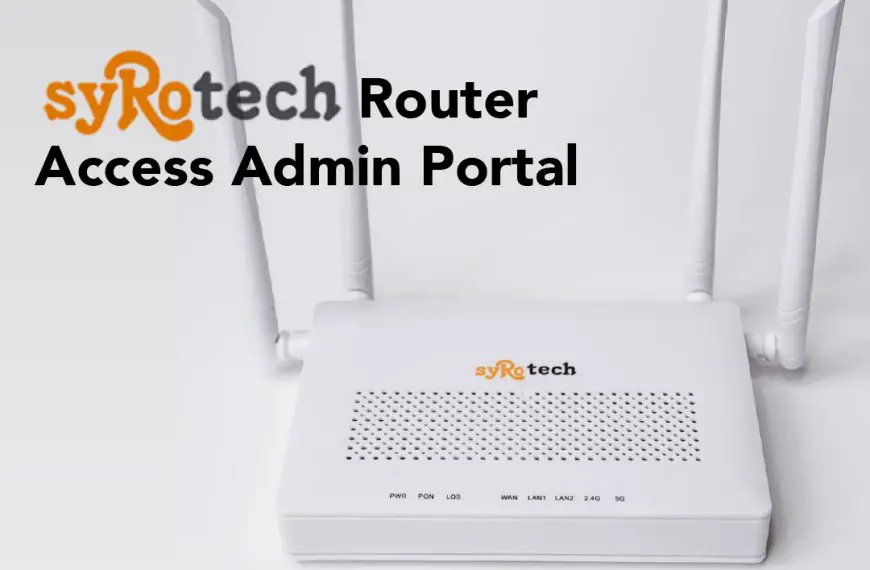Mitsubishi manufactures top-tier electric air conditioning systems renowned for their reliability, durability, affordability, and minimal maintenance requirements.
These air conditioners might sometimes encounter problems like any other electronic device. One commonly discussed issue in various forums is the air conditioner’s green light blinking while not functioning.
Here are a few common reasons with quick fixes for Mitsubishi Electric Air Conditioner Blinking Green Light.
| Issue | Quick Fix |
|---|---|
| Fluctuating Voltage | Unstable power supply or voltage regulation needed |
| Split Configuration Error | Review and adjust system settings |
| Blocked Fan | Clear any obstructions from the fan |
| Deteriorated Wiring | Repair or replace damaged wiring |
| Air Filter Blockage | Clean or replace the air filter |
| Inadequate Refrigerant | Recharge refrigerant or fix leaks |
| Malfunctioning Compressor | Arrange for professional repair or replacement |
| Thermostat Issues | Allow the evaporator coil to thaw and address the root cause, such as a dirty filter or restricted airflow. |
| Frozen Evaporator Coil | Allow the evaporator coil to thaw and address the root cause, such as a dirty filter or restricted air flow |
Now that I have mentioned causes with quick fixes, let’s jump to the problem and solution in detail,
1. Mitsubishi Electric Air Conditioner Flashing Green Light Due To Fluctuating Voltage
Sometimes, the voltage going to the AC unit isn’t steady; it keeps going up and down. This can harm the compressor, so the AC goes into safety mode by itself, cutting off power to the unit. When this happens, you’ll see a blinking green light.

To verify this, you should check the voltage meter installed in your house. If voltage fluctuations are indeed the cause, it’s often due to problems with the power grid, and the best course of action is to simply switch off the AC and wait until the voltages stabilize.
2. Split Configuration Error
A ‘Split Configuration Error’ in your AC system occurs when the settings for both the indoor and outdoor units are not configured correctly, resulting in both units not functioning harmoniously.

This can be one of the causes of the green blinking light on your AC. These errors can occur during the initial setup or when making changes to the settings later on.
To fix this problem,
- Check Settings: Go to your AC’s control panel or remote. Ensure the temperature, fan speed, mode (cooling, heating, etc.), and scheduling are set correctly.
- Read the Manual: Look at the user manual that came with your AC system. It gives you step-by-step instructions on how to set and adjust things properly.
- Factory Reset: If you’re unsure about the settings or think they’re messed up, you can do a factory reset (By holding a button on the remote). This erases all previous settings so you can start over.
- Get Professional Help: If you’re having trouble fixing the issue or don’t want to mess with the settings, ask an HVAC technician or the manufacturer’s service team for help. They know how to find and fix configuration mistakes so your split system works right.
3. Blocked Fan
Debris, leaves, or other items can accumulate around your Mitsubishi AC’s outdoor unit fan over time, causing blockages that lead to overheating and trigger the green blinking light.

To fix this,
- Turn off and disconnect the AC unit from the power source to ensure safety.
- Carefully check the outdoor unit for visible debris or obstructions near the fan blades.
- Gently remove any debris using your hands or a soft brush, taking care not to damage the fan blades.
- Trim nearby plants and branches to prevent future obstructions.
- To maintain proper airflow and prevent blockages, periodically clean the outdoor unit and surrounding area.
4. Deteriorated Wiring
When the electrical wiring in your AC system is damaged or faulty, it causes electric flux, which interferes with the unit’s normal operation, resulting in the green blinking light. Such damage occurs due to wear and tear or short-circuiting.

To fix this,
- Before inspecting or repairing, ensure the AC unit is completely powered off and disconnected to prevent electrical hazards.
- Carefully examine the cords and wiring for any visible signs of damage, such as fraying, exposed wires, or loose connections.
- If you identify any damaged cords or wiring, it is crucial to replace them. Use appropriate gauge wire and follow manufacturer guidelines for a safe and effective repair.
5. Air Filter Blockage
Similar to how a blocked AC fan hampers airflow, a dirty, clogged air filter impedes air circulation within the system. As a result, the AC unit has to work harder to maintain the desired temperature, which can lead to overheating and trigger the green blinking light on the unit.
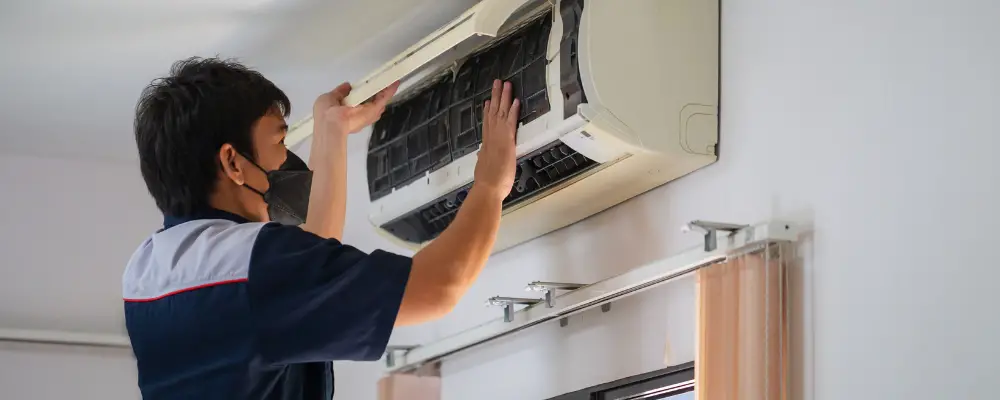
To fix this,
- Ensure your AC is turned off and unplugged to stay safe.
- Look for the air filter inside your AC. It’s usually near the return air vent inside your home.
- Peek at the filter to see if it’s dirty or clogged with dust and stuff. If it is, it’s time for some care.
- Depending on your filter type, you can either clean it if it’s reusable or pop in a new one if it’s disposable. Just follow what the manufacturer recommends for cleaning or replacing.
- Check and clean or change the filter regularly to keep your AC working well. Typically, every one to three months is good, but it can vary based on usage and filter type.
6. Inadequate Refrigerant
Refrigerant plays a vital role in your AC system, similar to how blood is crucial in our bodies. When your AC’s refrigerant levels drop due to leaks or other problems, the compressor fails to work properly, potentially causing the green blinking light to appear on your unit.
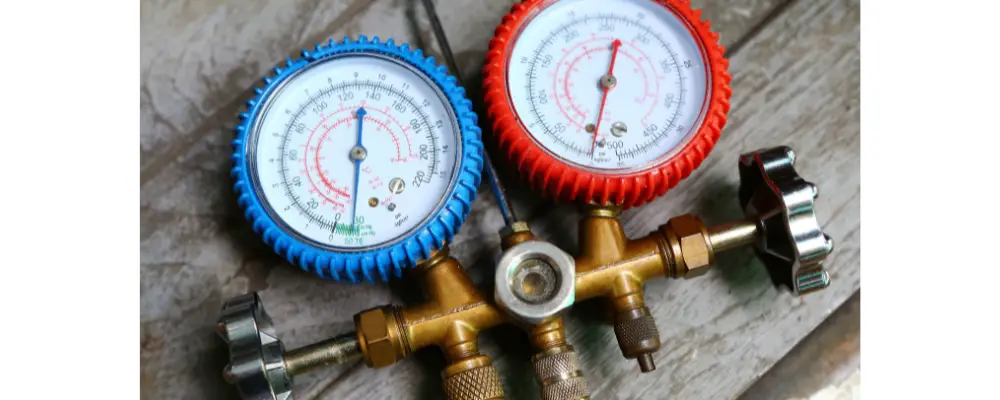
To Solve this,
- Please turn off your AC and unplug it for safety.
- Low refrigerant levels often indicate a refrigerant leak or a problem with the AC’s refrigerant lines. Contacting a qualified HVAC technician to inspect the system thoroughly is recommended.
- If they find a leak, they’ll repair it to stop more refrigerant from escaping.
- After fixing the leak, the technician will add more refrigerant to the right level.
- To avoid future issues, schedule routine maintenance for your AC. It helps find and fix problems early.
7. Malfunctioning Compressor
Think of the compressor in your AC system as its heart—it’s that important. When the compressor goes wrong, your AC might blow air, but it won’t be cool, which means it isn’t working.
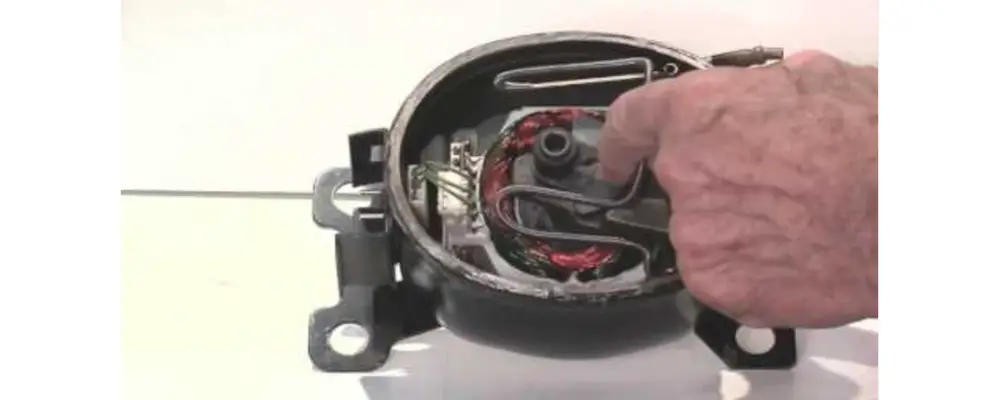
To fix this issue,
- Please turn off your AC and unplug it for safety before inspection or maintenance.
- Compressor issues are complex and require expertise. You will need the services of a professional HVAC technician. They will thoroughly diagnose the compressor and the entire AC system to identify the problem accurately.
- After diagnosing the compressor issue, the technician will decide whether to repair or replace it. This choice depends on how severe the problem is and the condition of the compressor. Replacement is often favoured because repaired compressors often don’t last long.
8. Issues with Thermostat
When your AC system encounters thermostat issues, it can result in inaccurate temperature readings or settings, causing irregular compressor operation. This may lead to compressor overheating, premature shutdown, or complete failure.
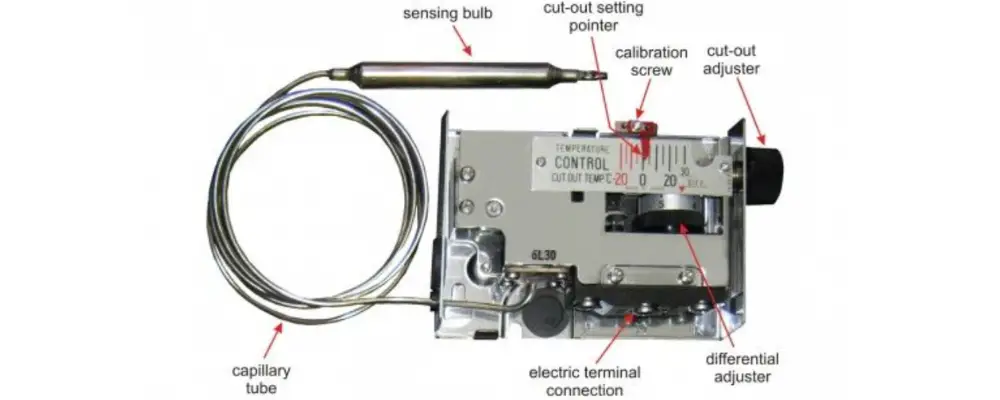
Here is how to fix it,
- Look at your thermostat settings to ensure they’re right, like the temperature and mode (cooling or heating). If you think it’s not reading the temperature correctly, check the manual for how to calibrate it. If the batteries are dead, replace them.
- In cases where the thermostat continues to malfunction despite calibration efforts, it might be necessary to replace it. To undertake this task, I recommend taking the services of a professional HVAC technician. They possess the expertise to remove the existing thermostat and install a new one that aligns with your specific requirements and preferences.
9. Frozen Evaporator Coil
A simple issue, such as a frozen evaporator coil, can cause a flashing green light on the Mitsubishi AC. A frozen evaporator coil disrupts the cooling process.

Here’s how to address this issue,
- Turn off the AC unit and let the frozen evaporator coil thaw naturally. This process may take some time.
- Identify and resolve the root cause to prevent future coil freezing. Look at the filter for dirt; if it’s dirty, clean it or change it.
- Ensure Airvents are open and not blocked so that air can flow properly.
- Check the blower motor and see if it’s working right.



